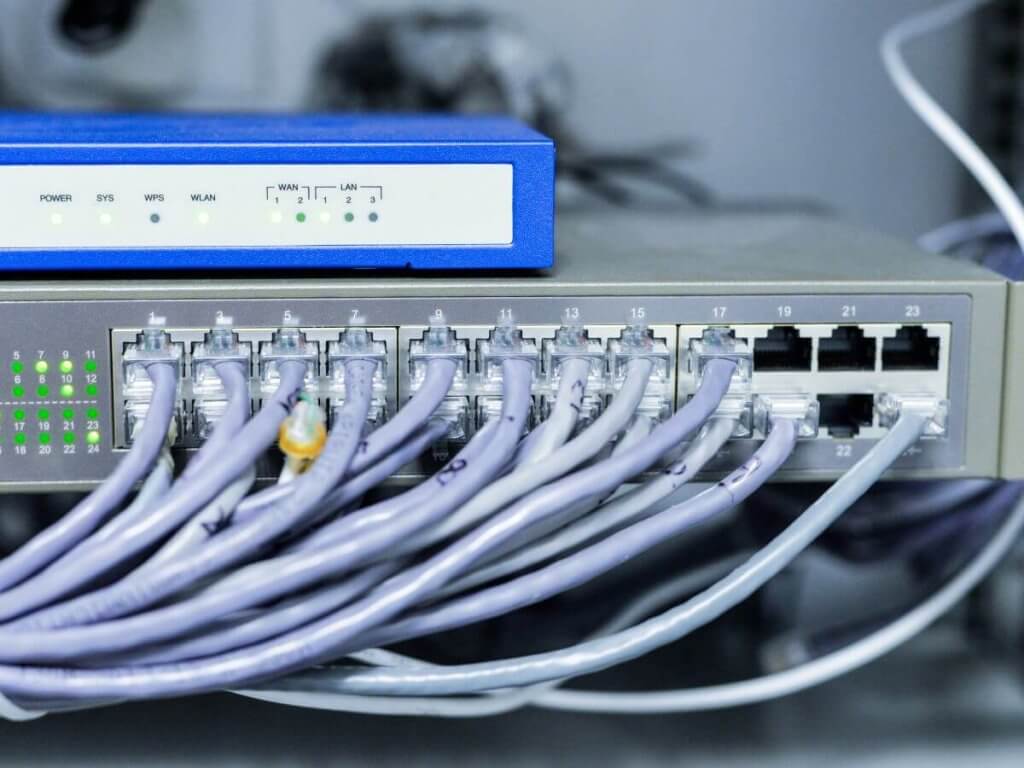In Malaysia, cybersecurity is still a significant concern. Due to inadequate cybersecurity safeguards, many organizations are vulnerable to cyber threats, including malware, phishing attacks, and ransomware.
Malaysia has experienced numerous cyberattacks in the last year alone. These include a payment gateway data breach and the theft of personal information from a national registration database, affecting 22.5 million people.
Read more: Cyber Crime in Malaysia.
In August 2025, cyberattacks targeting payroll and personal data continued to escalate. Credit agency TransUnion confirmed a breach exposing the personal information of over 4.4 million individuals, while Manpower Group disclosed a payroll data breach affecting 145,000 workers. These incidents highlight how attackers are increasingly exploiting third‑party platforms and vendor ecosystems, reinforcing the urgent need for stronger workplace cybersecurity measures.
What Is Unified Threat Management?

A system of information security known as Unified Threat Management (UTM) provides a single point of defense against various threats, including viruses, worms, spyware, other malware, and network attacks.
It combines security, performance, administration, and compliance features into a single installation. A UTM system, unlike antivirus software, covers more than just servers and personal computers (PCs). It scans all network traffic, filters potentially harmful information, prevents intrusions, and protects both entire networks and individual users.
Modern UTMs also integrate with cloud security platforms and support hybrid work environments, including secure remote access, advanced cloud workload protections, and hybrid IT infrastructures.
According to Verified Market Research, the Unified Threat Management (UTM) market was valued at USD 6.26 billion in 2023 and is projected to reach USD 11.88 billion by 2031, growing at a CAGR of 10.7% from 2024 to 2031.
Essential Capabilities of Unified Threat Management Solution
The same six features are included in almost all unified threat management applications. To entice specific users, some programs may also have additional functions.
Antispam systems examine incoming and outgoing email traffic for indicators of attacks. They use algorithms to detect spam by analyzing words, patterns, or message structures. Messages flagged as suspicious are quarantined or marked.
UTM devices can filter URLs and control applications. Application control enables specific programs to be added to an allowlist, while URL filtering restricts access to unwanted websites. These functions usually work with firewalls and other UTM security tools to manage network traffic.
A firewall is a hardware- or software-based security system that monitors and controls incoming and outgoing network traffic. Its primary role is to enforce access rules, preventing unauthorized users or malicious traffic from reaching sensitive resources such as file servers, printers, and web servers.
IDS and IPS monitor traffic to identify or block malicious activity. They operate in conjunction with firewalls and other UTM tools to provide layered monitoring and response.
A VPN establishes encrypted tunnels between devices across public networks. This allows remote access, file sharing, and internal resource usage without exposing data to external parties.
Web content filtering limits traffic based on IP addresses, port numbers, or MAC addresses. It can restrict access to unwanted material and filter outbound data to prevent sensitive information from leaving the network.
What are the Benefits of Unified Threat Management
Unified Threat Management consolidates multiple security functions into a single platform, providing a simplified, cost-effective, and resilient defense for networks.
Simplified and Centralized Management
- Single point of control: A centralized dashboard manages all security functions, eliminating the need to juggle separate tools.
- Reduced complexity: Streamlined operations allow IT staff to focus on strategic tasks.
- Faster response times: A unified view of security events enables the detection, investigation, and response to be handled quickly.
Cost Reduction
- Lower total cost of ownership (TCO): Replaces standalone tools such as firewalls, antivirus software, and VPNs, thereby reducing hardware, licensing, and maintenance costs.
- Reduced staff burden: A single administrator can manage the system, lowering labor expenses and increasing efficiency.
Improved Threat Detection and Defense
- Multi-layered protection: Integrates antivirus, intrusion prevention, web filtering, and firewalling for broad threat coverage.
- Correlated threat intelligence: Modules share data to enable faster, automated responses, such as blocking malicious IP addresses detected by antivirus software.
- Enhanced visibility: A single console improves monitoring and reduces blind spots across the network.
Streamlined Operations and Compliance
- Easier installation and deployment: Rolling out one solution is quicker than managing multiple products.
- Consistent policies: Enforce uniform rules across the network to reduce misconfiguration risk.
- Simplified compliance: Integrated security features support requirements for GDPR, HIPAA, PCI DSS, and other standards.
Best Practices for UTM Security Solutions

As previously mentioned, Unified Threat Management (UTM) is a security solution that combines multiple security features into a single platform. Best practices for implementing UTM include:
- Conduct a thorough risk assessment to identify potential threats and vulnerabilities.
- Segment networks to limit the spread of a security breach.
- Implement a comprehensive security policy that includes guidelines for user behavior and access controls, ensuring a robust security framework.
- Regularly update the UTM software and the signature databases of its included security functions, such as firewall, antivirus, and intrusion prevention.
- Monitor network traffic and security events in real-time, and have an incident response plan in place to quickly respond to detected threats.
- Conduct regular testing and validation of UTM configurations and effectiveness, including penetration testing, vulnerability scanning, and stress testing against evolving attack techniques.
- Follow the principle of ‘defense in depth’, implementing multiple layers of security, including firewalls, deep packet inspection, intrusion detection and prevention, and SIEM tools.
- Ensure all UTM components are properly configured and updated, and review/update security policies as the threat landscape changes.
- Train staff continuously on cybersecurity threats, not just the basics, but also emerging tactics like AI-powered phishing and evolving ransomware variants, so teams remain alert to new forms of social engineering.
- Perform regular security audits in hybrid cloud environments, ensuring both on-premises and cloud assets are aligned with compliance requirements.
- Keep UTM firmware and threat signatures up to date to defend against zero-day exploits and polymorphic malware that can bypass static defenses.
Implementing these best practices can help organizations to better protect against cyber threats and achieve a strong and efficient security posture.
UTM (Unified Threat Management) vs Traditional Firewalls
While both UTMs and traditional firewalls are designed to protect networks, they differ in scope and capability:
- Traditional firewalls primarily focus on monitoring and controlling network traffic based on security rules, thereby blocking unauthorized access and external threats.
- UTMs (often considered Next-Generation Firewalls) go further by combining multiple security functions, such as antivirus, intrusion prevention, VPN, and content filtering into a single platform.
A firewall provides a single layer of protection, whereas a UTM delivers a more comprehensive, all‑in‑one security solution that addresses a wider range of threats.
Future of Cybersecurity in Malaysia and How Organisations Can Prepare Their Security Teams

The future of cybersecurity in Malaysia looks very promising. As the country advances technologically, more organizations will need to invest in IT security solutions to protect their confidential data and networks.
To prepare for this future, organizations must ensure that their security teams are properly trained and equipped with the necessary tools to detect and respond to potential threats promptly. This can be achieved by establishing a strong cyber culture, investing in the latest technologies, leveraging advanced analytics, and taking proactive steps toward cyber defense.
With the right measures in place, Malaysia can remain a competitive player in the global cybersecurity landscape for years to come.
At Spectrum Edge, we take pride in being your trusted provider of cybersecurity solutions in Malaysia. Our team is highly knowledgeable and experienced in providing tailored cybersecurity solutions that help organizations protect their data, networks, and assets against the ever-evolving threats posed by malicious actors.
We offer leading technology solutions from trusted brands, such as Fortinet, which boast powerful features including advanced malware protection, antivirus protection, intrusion detection and prevention capabilities, data encryption/decryption services, and more.
Regardless of the size of your organization or the budget you require, our team can provide a Fortinet solution that perfectly meets your needs. Contact us today for a complimentary consultation on how Spectrum Edge can help your organization stay secure.
Unified Threat Management (FAQs)
UTMs add value when integrated into broader frameworks:
- SIEM: UTMs forward logs (firewall, intrusion, VPN, web) to a SIEM for centralised analysis, correlation, and incident response.
- XDR: UTMs supply network telemetry and act as enforcement points. XDR combines endpoint and cloud data and can push actions back to the UTM.
- Zero Trust: UTMs enforce segmentation, apply identity-based policies, and inspect all traffic, supporting the “never trust, always verify” model.
While Unified Threat Management (UTM) solutions simplify security by consolidating multiple defenses into a single platform, organizations often encounter several deployment challenges:
- Performance bottlenecks: Running firewall, IPS, antivirus, and VPN simultaneously can strain hardware, leading to latency or reduced throughput if the appliance is undersized.
- Scalability limits: UTMs are well-suited for small to mid-sized networks but may struggle to handle the traffic demands of large enterprises without costly upgrades.
- Single point of failure: Because UTMs centralize multiple protections, a device failure or misconfiguration can disrupt all security layers at once.
- Complex policy management: Balancing firewall rules, application controls, and content filtering can become complicated, increasing the risk of misconfiguration.
- Integration hurdles: UTMs may overlap with or conflict with existing SIEM, XDR, or Zero Trust tools, making integration into broader security frameworks challenging.
- Compliance reporting gaps: Basic UTM reporting may not meet stringent audit requirements, necessitating the use of additional log management or analytics tools.
- Cost considerations: Although UTMs reduce tool sprawl, licensing all modules, adding redundancy, and scaling hardware can increase the total cost of ownership.
- Training needs: IT teams may underestimate the learning curve, leading to under‑utilization or misconfiguration of advanced features.
UTMs provide strong all-in-one protection, but organizations should plan carefully for sizing, redundancy, integration, and compliance reporting to avoid deployment pitfalls.